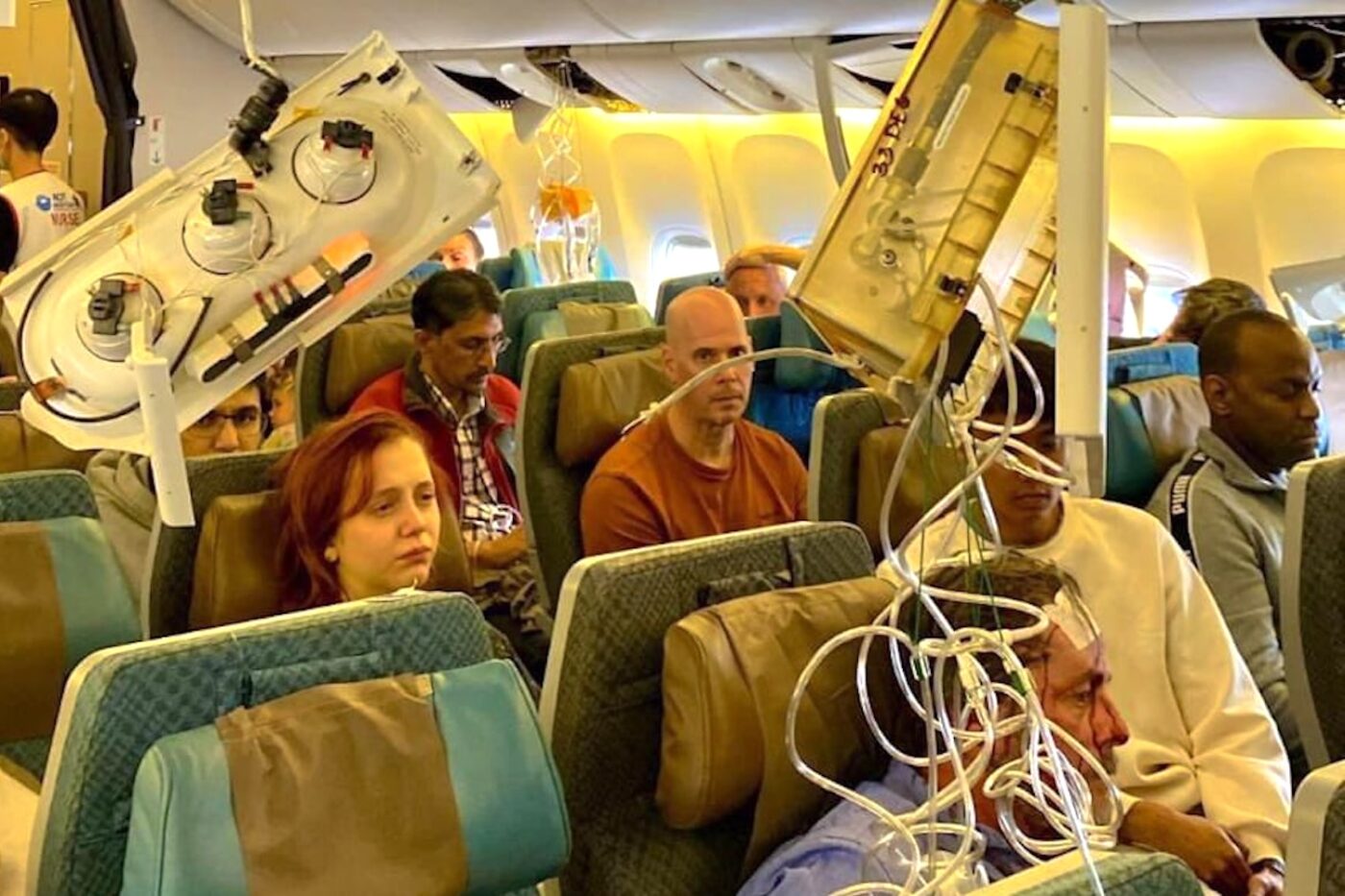Severe turbulence on a Singapore Airlines flight caused one death and over 30 injuries, so how can you stay safe on your next flight?
What Happened On Singapore Airlines Flight SQ321?
Passengers on a Singapore Airlines flight from London to Singapore earlier this week experienced a terrifying incident when very severe turbulence struck, with tragic consequences.
Curated news for men,
delivered to your inbox.
Join the DMARGE newsletter — Be the first to receive the latest news and exclusive stories on style, travel, luxury, cars, and watches. Straight to your inbox.
The turbulence hit unexpectedly as meal service was underway, causing the plane to drop over 6000 feet very suddenly. Geoff Kitchen, a 73-year-old British passenger, died from a suspected heart attack, and over 30 others were injured as people and objects were violently thrown around the cabin.
The Australian Department of Foreign Affairs and Trade reported that eight Australians on board — out of a total of 56 Aussie passengers — were hospitalised in Bangkok due to their injuries. The Australian Embassy in Bangkok and the Australian High Commission in Singapore are working to determine if any more Australians have been affected.
Sydney-Bound Plane Damaged By Thrown Passengers After Terrifying Nosedive
After the chaotic breakfast service, the Boeing 777-300ER was forced to divert to Bangkok, where it made an emergency landing at 3:45 pm local time on Tuesday. The turbulence is said to have been so severe that passengers were launched into the ceiling of the cabin, causing severe injuries and denting overhead baggage compartments.
As the aftermath of the flight continues, passengers have begun to share their first-hand experiences.

Fasten Your Seatbelts
While it may seem obvious to some — and may deeply upset those who find the ever-present seatbelt sign and flight attendant reminders to be tiresome — wearing your seatbelt at all times is the only surefire way to minimise injuries during turbulence, especially turbulence as unexpected and severe as this.
Passengers have underscored the vital importance of wearing seatbelts during flights in the days and hours following this terrifying turn. Dzafran Azmir, a 28-year-old student, described the aircraft suddenly tilting and shaking before a dramatic drop:
“Everyone seated and not wearing a seatbelt was launched into the ceiling.”
Dzafran Azmir
He also noted how some passengers hit their heads on overhead baggage compartments, causing dents and damage to themselves and the cabin alike.
Andrew Davis, a Briton on the flight, recalled further chaos:
“There was awful screaming and a thud. Objects and things were flying through the air. I was covered in coffee. It was incredibly severe turbulence.”
Andrew Davis
After the plane diverted to Bangkok for an emergency landing, 31 people were taken to the hospital. Singapore Airlines has since expressed condolences to Kitchen’s family and worked with Thai authorities to provide medical assistance to passengers.
American Flyers Endure Bone-Breaking “Matrix” Turbulence As Climate Change Ruins Flying Forever
The seemingly random incident highlights the always-unpredictable nature of turbulence, often caused by aircraft flying through clouds or far more dangerous “clear air” turbulence, which isn’t visible on weather radar. As such, aviation experts emphasise the importance of keeping seatbelts fastened throughout flights, long or short.

John Strickland, an industry insider, said that “injuries from severe turbulence are relatively rare given the millions of flights operated, but severe turbulence can lead to severe injuries or fatalities.” Sally Gethin, an aviation journalist, reiterated that wearing a seatbelt could be the “difference between life and death.”
As ongoing climate change increases the likelihood of severe turbulence, all of this serves as a stark reminder to always heed the safety advice dolled out by flight attendants, no matter how annoying tha little yellow light may be.

